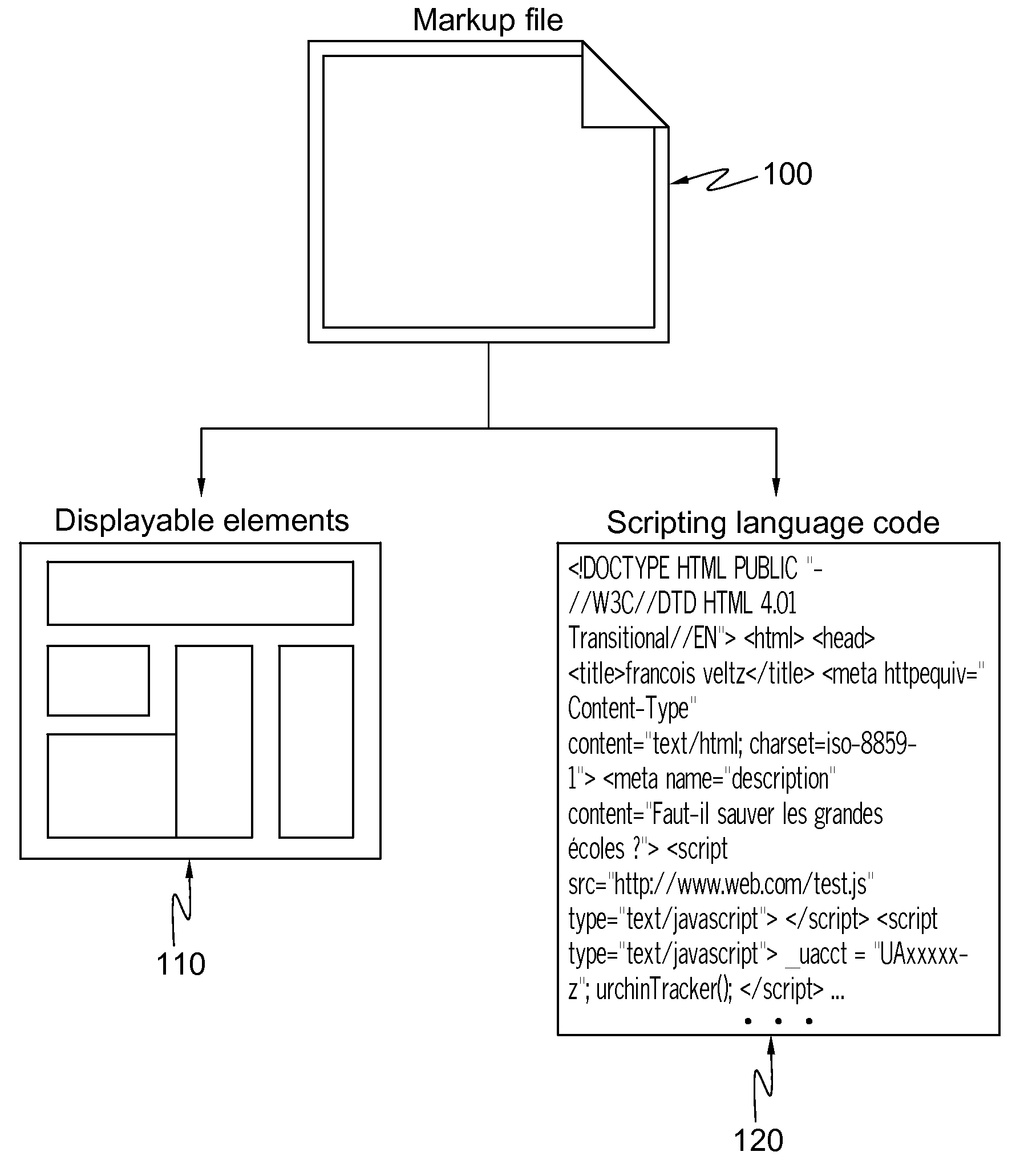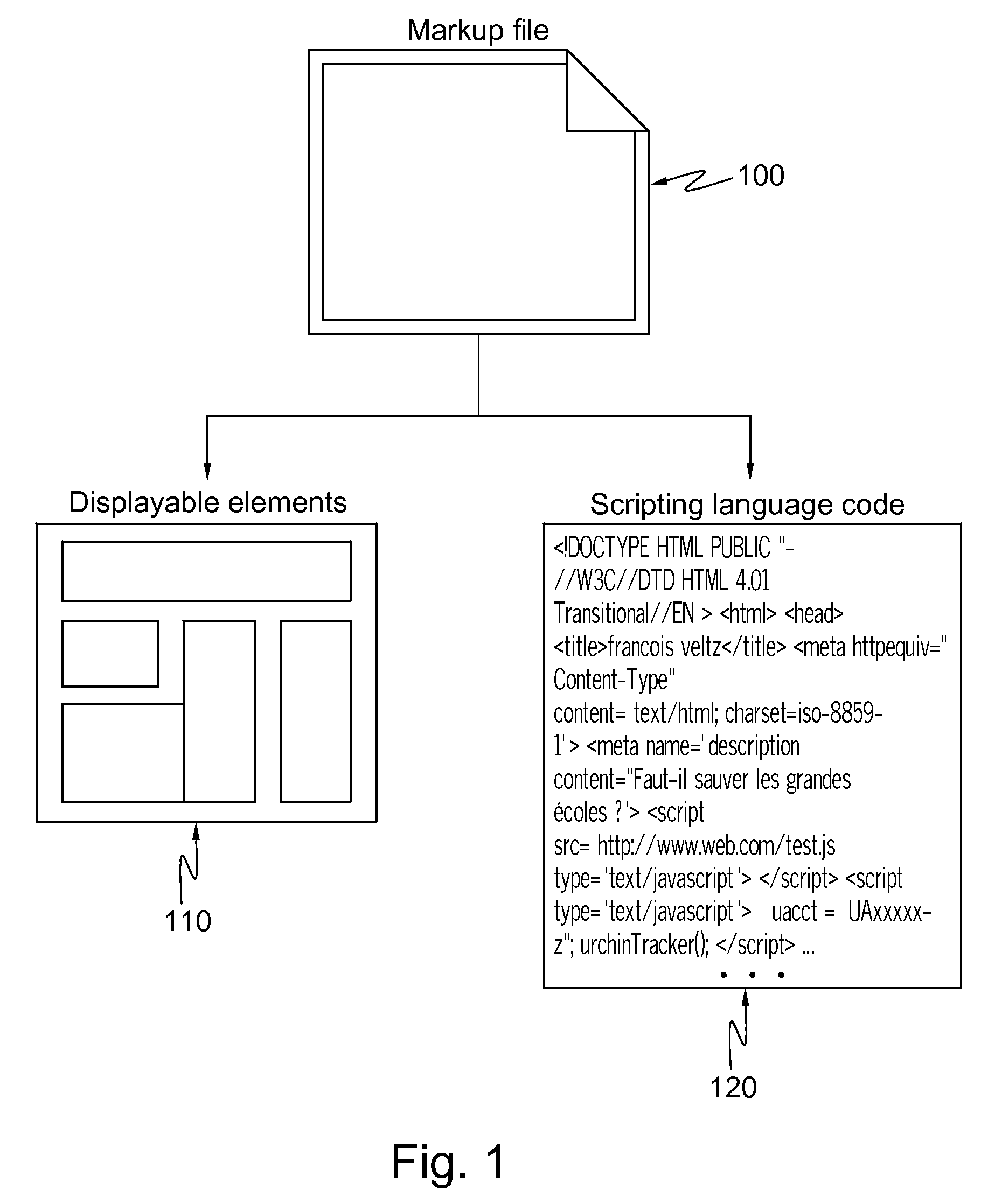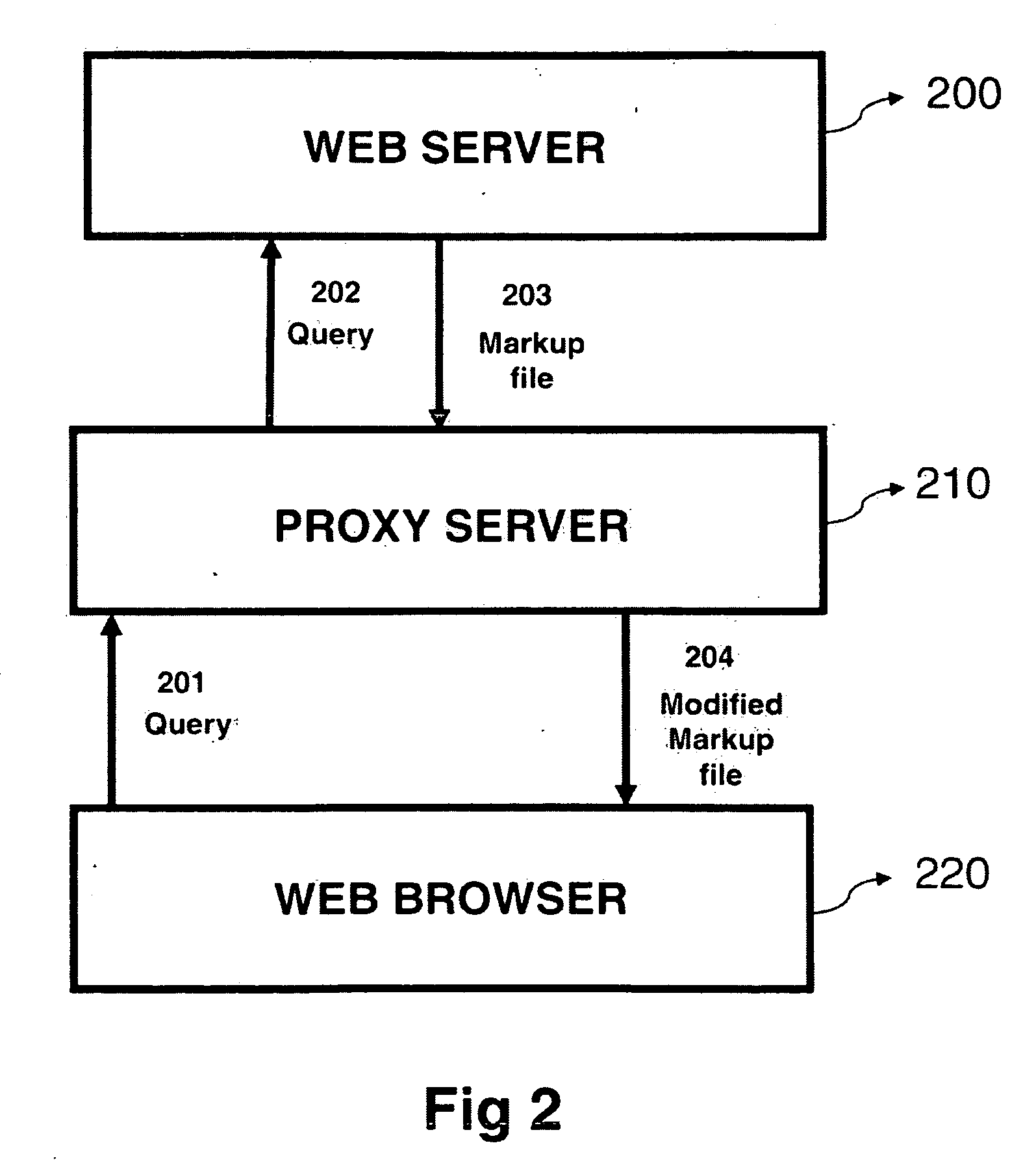[0012]Indeed, a very first
advantage of the present invention lies in its ability to secure the display of advertisements, because it defeats
semantics technologies (ineffective on images) and exploits image recognition technologies' limitations (advertisements enclosed in larger images are not detectable). It should be noted, however, that the present invention is not solely directed toward advertisements. Indeed, the present invention addresses every situation wherein the display of a particular area (such as text or
graphics) needs to be secured (need for preserving the integrity of displayed data). This will be further discussed.
[0013]An indirect benefit of the present invention lies in its ability avoid any execution of malicious code (if any) both for the
proxy server and the
web browser.
The Internet today is infested with dangers, among which is malicious
software code. A user visiting a
web page with a web browser can inadvertently execute malicious code, endangering the user's
local machine (immediately or in the near future). The generic malicious code may comprise a
virus, Trojans later downloading and installing keyloggers, spyware, etc. Private and financial data are then at risk, and the hardware device can also be physically damaged, if not remotely used for illegal purposes. It is then very valuable to be able to safely browse
the Internet. Indeed, the two-tier architecture enables malicious code execution to be avoided on the browser side (the web browser does not receive anymore markup pages with unreliable code, but only very simple markup
scripting language and images) while the use of virtual machines secures the proxy (the
virtual machine is disconnected from the
host machine; for example, dynamic links libraries (dll) cannot be modified,
virtual machine act like a so-called sandbox).
[0014]Quite surprisingly,
malware and advertising are tied: malicious code is said to be massively injected through
online advertising, due to the complex structure of business relationships (injection of malicious content into legitimate advertising delivery streams). The present invention secures the display of advertisements and at the same time avoids malicious code execution. The web browser has the guarantee not to execute any malicious code while the content provider has the guarantee to secure its advertisements. It is a win-win operation that opens many interesting business opportunities.
[0015]Another
advantage is that it only requires a standard browser. It does not require any additional plug-in, components or local
software on the
client side. No additional software is required on top of the web browser. The present disclosure is thus the first approach that works without browser modifications (use of unmodified browsers). It can be used directly in today's browsers, hence adoption can be immediate.
[0016]Yet another
advantage is it enables fast and low cost
internet access. It reduces the weight and complexity of an incoming markup file for the web browser (it reduces possible bugs or error contained in code elements). Today, many of devices (mobile phones, tablet PCs, etc.) have limited CPU capacities. Because modified markup files only contain image files (in addition to
scripting language code which is not malicious), browser or viewers running on such devices almost only need to be able to display images. It thus enables remote browsing for mobile devices with limited computing and memory resources.
[0017]Further advantages of the present invention will become clear to the skilled person upon examination of the drawings and detailed description. It is intended that any additional advantages be incorporated therein.
 Login to View More
Login to View More  Login to View More
Login to View More 


